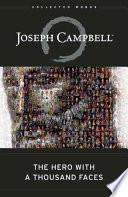
Source: The Hero with a Thousand Faces (1949), Chapter 1
Context: The multitude of men and women choose the less adventurous way of the comparatively unconscious civic and tribal routines. But these seekers, too, are saved—by the virtue of the inherited symbolic aids of society, the rites of passage, the grace-yielding sacraments, given to mankind of old by the redeemers and handed down through the millenniums. It is only those who know neither an inner call nor an outer doctrine whose plight is truly desperate; that is to say, most of us today, in this labyrinth without and within the heart. Alas, where is the guide, that fond virgin, Ariadne, to supply the simple clue that will give us the courage to face the Minotaur, and the means to find our way to freedom when the monster has been met and slain?
